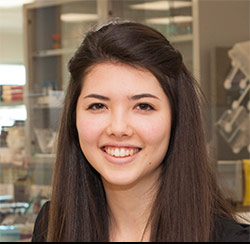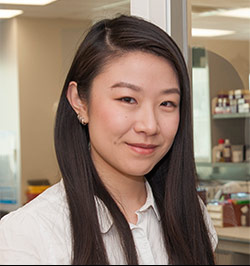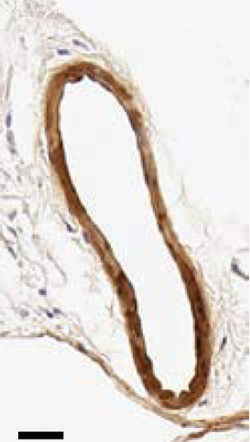For more information on undergraduate studies at Western Science, please contact:
Academic Counselling
Phone: 519-661-3040
Email: scibmsac@uwo.ca
A Spectacular Science Internship: Changing Perspective from Telescopic to Microscopic
At first glance, there doesn’t seem to be much common ground between the study of astrophysics and research into microvasculature. The same thought occurred to Sachi Elkerton, a third year Physics and Astronomy student, when she was interviewed by Dr. Aaron Ward of the London Regional Cancer Centre for her science internship. Elkerton was more familiar with exploring planetary systems and immense galaxies but she went into the interview with an open mind, and it paid off.

Sachi Elkerton.
Ward’s group is studying, in collaboration with Dr. Geoffrey Pickering, how the microvasculature regenerates after it has been damaged, for example, as a result of a stroke. To do this, each muscle surrounding every individual arteriole in a microscopic section must be segmented to reveal the difference between the normal, diseased and recovered states. Processing the slides is labour intensive involving numerous cross sections, staining to see these muscles, and digitally scanning each slide to produce sequential images. Then comes the complex counting and characterization of the vessels in individual slides which are then correlated by Ward’s PhD student Yiwen Xu to build a 3D virtual model. It is a daunting task and collecting tens of thousands of measurements for analysis can be fraught with human error. Both Ward and Xu noticed that Elkerton had worked with the mathematical computing software package MATLAB and eventually Ward hired Elkerton to automate the process so that it would be more accurate and faster.

PhD student Yiwen Xu was a valuable mentor to Sachi.
Elkerton found this to be an extraordinary internship, due in large part to her immediate supervisor and mentor, Xu, “there was a lot of guidance from Yiwen. She would give me all of this test code that I could go through and I’d learn it line by line. Having past experience with MATLAB was very helpful.” Elkerton adds that while she had some experience in programming, when it came to image processing, “all that was new.”
Elkerton’s work took all of the vessels that Xu segmented in virtual slides and extracted over 450 features. “We put this through a machine-learning process to separate the arterioles from the venules based on the features that it was given.” As Xu puts it, “so what we have already built is a system where you can put in the images and it will calculate those 450 features for us. I think that is where the teamwork occurs in our lab because if someone is using the same source of software, then everyone can contribute. It makes all of our lives easier.”

Elkerton had computer identify arterioles through a machine learning process.
While this technology is currently being used to study ischemia, it could also be used quantify the development of new blood vessels and even track the growth of microvasculatures within cancer tumors.
From the very outset of Elkerton’s internship Ward says that “The intent was to give her what the exact experience would be as a Masters student in the lab.” He adds, “In fact, productivity wise, she’s better than most Masters students.”
Early on, Elkerton’s work has had some unexpected benefits. In February, her proceedings paper was accepted for oral presentation at the International Society for Optics and Photonics Medical Imaging (SPIE) conference in San Diego, followed by a presentation at the Imaging Network Ontario conference in Toronto in March. She is currently preparing a journal manuscript.
Now, after almost sixteen months of internship Sachi is reassessing her career plans, “I’m not sure if I’m going to stay in astrophysics, we’ll see, there are so many options now.” She adds, “I honestly hadn’t considered medical physics or medical biophysics at all before so it has kind of opened new doors and possibilities.”

